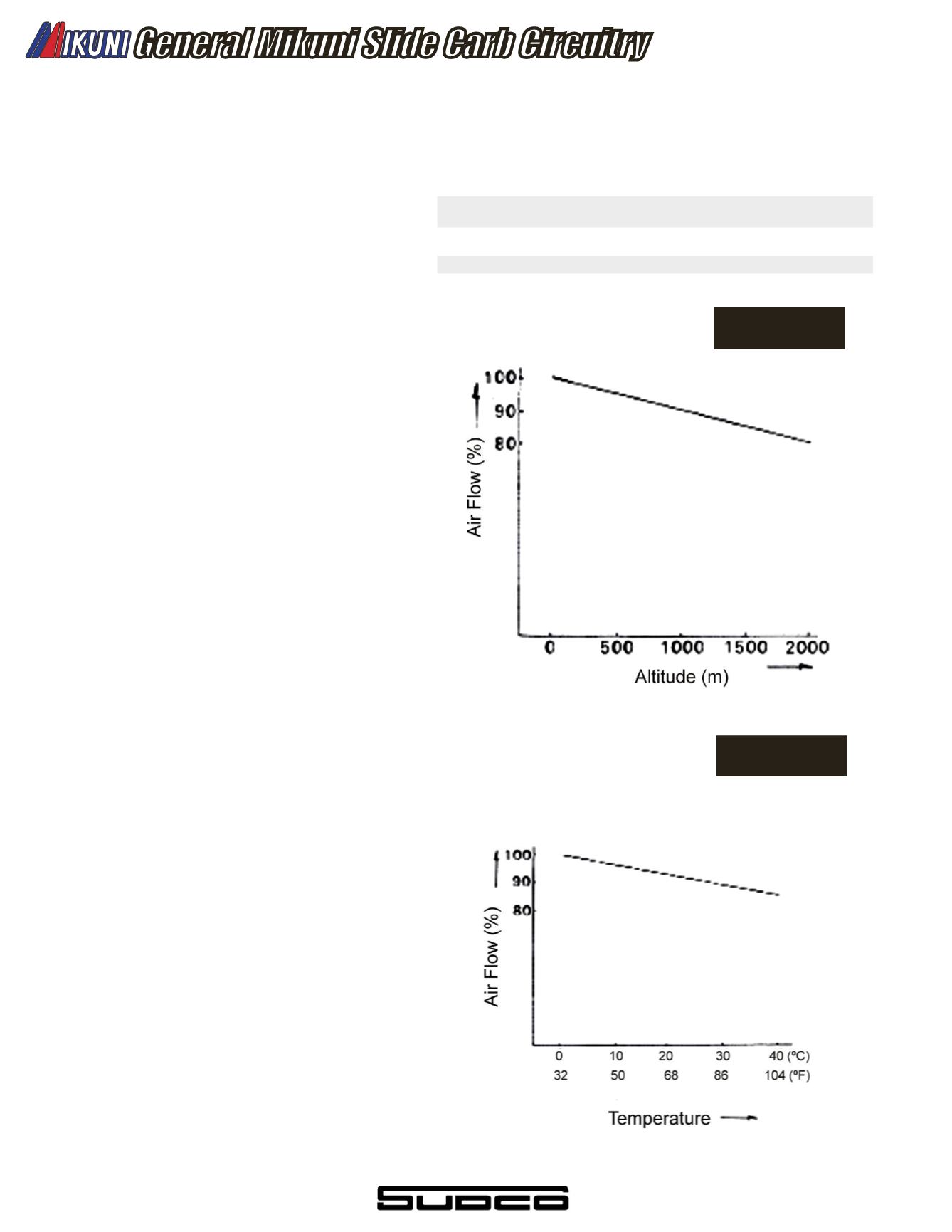

6. MAINTENANCE
A carburetor consists of various precision machined parts such jets,
needles, valves, etc. Therefore, care should be exercised, when
removing
jets or disassembling the carburetor for cleaning.
1)
Proper tools should be used for disassembling and reassembling
of jets. Handle watch part carefully to avoid scratches, bending, etc.
2) Wash the jets and the carburetor properly in solvent and blow
them out with compressed air.
3)
For carburetors whose main jet can be replaced from the outside,
an “O” ring is used to prevent leakage of fuel. When you it the “O’
ring, apply a little lubricant or fuel.
4)
It is important to maintain the fuel level in the carburetor. Do not
touch the loat arm, when disassembling the carburetor. If the loat
arm is bent accidentally, adjust the height of rib to the speciic mea
-
surement (refer to Fig 18).
7. TUNING CARBURETOR RACING
The maximum output of the engine depends on:
1)
The amount of air drawn into the cylinders
2)
Whether an air fuel mixture is delivered to the cylinders
in a proper ratio.
Since the amount of air that is drawn into the carburetor
varies with the temperature, the atmospheric pressure, humidity,
etc., the mixture ratio is also changed. It is important; therefore, that
the fuel low be adjusted in accordance with the altitude of the racing
course and meteorological conditions prevailing.
A. - Incoming Air in Relation
to Meteorological Conditions
The amount of air drawn in to the cylinders is inluenced by such
factors as the altitude, the temperature, the humidity, etc. Supposed
that the amount of air sucked into the cylinders at an elevation of
zero is taken as 100 (the temperature and humidity in this ease are
considered constant). The amount of air in question decreases in
proportion to a rise in elevation as shown in Fig.19. Reduction in the
amount of air drawn into the cylinders changes the air-fuel mixture
ratio, with the result that the power output drops markedly. Fig.20
shows the relation between a rise in temperature and the amount of
air drawn into the cylinders (in this case, the atmospheric pressure
(elevation0 and the humidity are considered unchanged and the
amount of air going into the cylinders at 32 degrees F (0 degrees
C) is taken as 100. In this case of the engine for racing where the
maximum output is constantly called for, it is to tune up the engine
by making a matching test the carburetor in accordance with the
temperature and other conditions on the racing course.
Model VM16-519 VM18-144 VM20-273 VM22-133 VM26-8074
H
(mm)
24~26 20~22
20~22 24~26 15~17
VM26-606 VM30-83 VM34-168 VM36-4 VM38-9 VM44-3
22~24 22~24 22~24
17~19 17~19 17~19
General Mikuni Slide Carb Circuitry
Figure 19
Figure 20
542
















